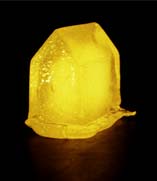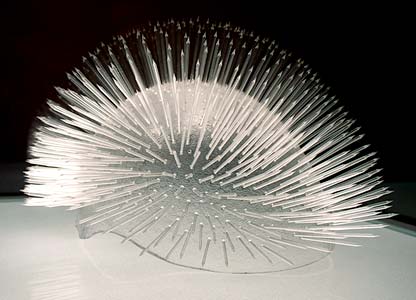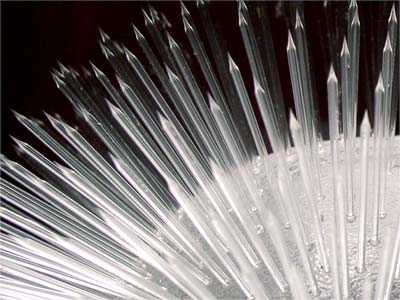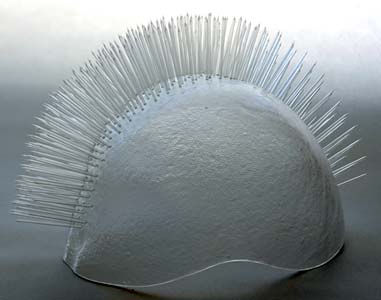| Scroll right
to view the photos. Click on images for captions and a larger view.
Inspiration for Norberg's sculpture came from two surprisingly different
sources: the antennae-shaped parts of the neuron (nervous system
cell) that conduct charges, and an archaeological excavation of
a Stone Age site in Sweden. In the artist's native home of Gotland,
an island in the Baltic Sea, the ancient grave of a young female
revealed the remains of a hedgehog skin placed above her head -
like a cap. The bones of the animal were in a pouch hanging around
her neck. Headgear is a widespread cultural signifier of identity,
and is used in rituals for assuming the spirit of animals. Possibly
the girl's hat played a similar talismanic role. Norberg saw a connection
between the ancient, prickly accessory and the ultra-fine glass
tool she views as a symbol for the physical processes of memory.
The brain-shaped base of the sculpture was formed from glass blown
into a mold of Norberg's head; it is covered with the same type
of glass micropipettes used for scientific purposes, including in
vitro (i.e., "in glass") fertilization. The tip of each
pipette is approximately the size of a cell; it is easily damaged
and so small that it is invisible to the unaided eye. The rayed
application of pipettes to half of the head brings to mind both
a specimen sliced in cross-section for comparative analysis and
a dissipating milkweed seedpod.
Norberg chooses to work with fragile materials like glass because
they permit her to “visualize the inexplicableness of some
kinds of knowledge." "One could argue,” she says,
"that each pipette possesses the notion of the moment - of
now - which is where memory truly exists before getting lost in
the 'trails' of the brain."
Susanne K. Frantz
The Other Side of the Looking Glass: The Glass Body and Its Metaphors
Published by the Turtle Bay Exploration Park 2003
Click here to view haircut
|





